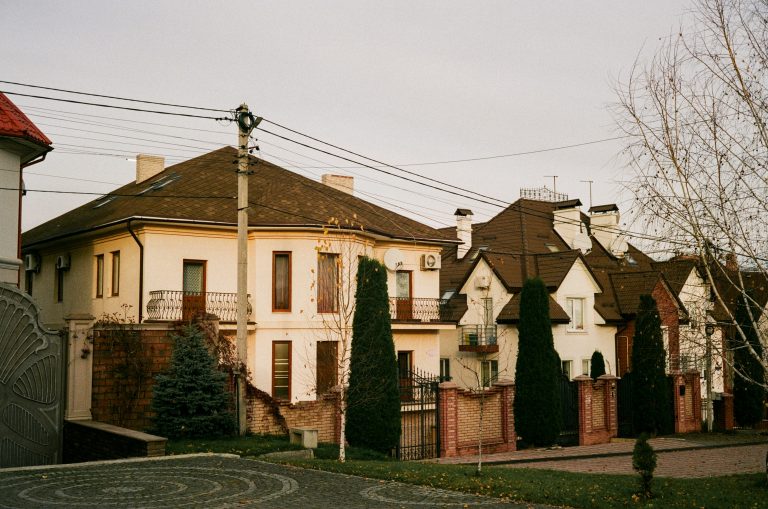Older homes have undeniable charm—ornate cornices, timber sash windows, and the sort of architectural detailing that modern builds often lack. For landlords in areas rich with history, such as Derbyshire, these character properties can be a real draw for tenants seeking unique living spaces. But with charm comes responsibility. Period homes demand a different level of care and attention to remain safe, comfortable, and profitable. As any experienced Derbyshire letting agents will tell you, effective maintenance is not just about preserving beauty—it’s about protecting your investment.
In this article, we explore practical and proactive strategies landlords can use to keep period and older homes in top condition.
1. Understand the construction and materials
Many period properties were built using techniques and materials that are no longer common in modern housebuilding. Lime plaster instead of gypsum, solid walls rather than cavity walls, and natural ventilation rather than mechanical systems—all these elements behave differently and require specific care.
For example, using modern, impermeable materials such as cement render on an old stone wall can trap moisture and lead to damp problems. As a landlord, it’s essential to research your property’s original construction or work with specialists who understand the nuances of heritage buildings.
2. Prioritise regular inspections
Older homes are more vulnerable to wear and tear. Roof tiles can shift, timber can rot, and damp can creep in through small cracks or outdated pointing. Conducting regular inspections—ideally twice a year—helps identify issues before they escalate into expensive repairs.
Key areas to inspect include:
- Roof and chimney stacks
- External walls for signs of cracking or erosion
- Gutters and downpipes
- Window frames and sills
- Flooring and structural timber beams (especially in basements or attics)
Keeping a detailed maintenance log can also help should you need to provide evidence of upkeep to insurers or regulatory bodies.
3. Maintain period features with care
Original features are a selling point. From decorative fireplaces and mouldings to flagstone floors and stained glass, these elements can increase a property’s rental appeal. However, they also need careful handling.
Avoid over-renovating or replacing period details unless absolutely necessary. Where restoration is needed, always aim for like-for-like repairs using sympathetic materials. Tenants might not notice every detail, but many appreciate the authenticity of a well-preserved home.
If you’re not sure how to care for a particular feature, consult a conservation specialist. Some properties may also be listed or located within conservation areas, in which case there may be legal restrictions on what work can be done.
4. Tackle damp and insulation issues the right way
Damp is one of the most common issues in older properties. But it’s often caused—or worsened—by well-meaning but inappropriate upgrades. For instance, sealing up original airbricks or replacing breathable plaster with a waterproof alternative can reduce airflow and trap moisture.
To avoid these problems:
- Ensure the property is well ventilated
- Maintain and repair external pointing and render with breathable materials
- Consider using breathable insulation systems like wood fibre boards
- Avoid installing plastic paints on walls that need to “breathe”
In some cases, a damp surveyor who specialises in period homes can provide tailored advice.
5. Upgrade systems sensitively
While charm is important, so is functionality. Electrical systems, plumbing, and heating often need updating in older homes to meet modern standards. This can be done sensitively without damaging the fabric of the building.
Some tips include:
- Use surface-mounted trunking where chasing into walls is not an option
- Hide modern systems (like boiler units or wiring) within joinery or cabinetry
- Choose traditional-style fixtures with modern efficiency—such as column radiators or vintage-style light switches
Make sure all systems are checked and certified regularly, particularly for gas and electrical safety, in line with landlord legal obligations.
6. Keep up with regulations and energy standards
With new government regulations around energy efficiency (EPC ratings) and rental standards, landlords of older homes may face challenges. Properties with single glazing or solid walls may struggle to meet minimum EPC requirements without major work.
That said, exemptions are available where listed status or conservation rules prevent improvements. Landlords should:
- Review the EPC regularly and keep evidence of all improvements made
- Apply for exemptions when needed, with supporting documentation
- Consider non-invasive energy upgrades like heavy lined curtains, draught-proofing, and secondary glazing
Consult your local authority or a trusted property advisor to stay compliant.
7. Choose tradespeople experienced with heritage properties
Not all contractors have experience working with older buildings. A quick-fix approach might seem appealing, but it can cause more harm than good. When hiring tradespeople, prioritise those with knowledge of traditional construction methods and heritage materials.
As a landlord, building relationships with trusted, specialist contractors can save you time, money, and stress in the long run. Many Derbyshire letting agents maintain a directory of preferred contractors who are familiar with local building styles and property standards.
8. Work with letting agents who understand period homes
Managing an older property comes with its own set of challenges, especially if you’re a hands-off landlord. That’s where a letting agent with local knowledge and experience in managing period homes becomes invaluable.
A good letting agent can:
- Recommend reliable contractors
- Conduct thorough inspections
- Advise on legal compliance
- Attract the right type of tenant who appreciates and cares for the home
For landlords in heritage-rich areas, partnering with knowledgeable agents can make all the difference in preserving your property’s character while ensuring steady rental income.
Final thoughts:
Owning and letting a period property may be each profitable and demanding. These houses are frequently more than bricks and mortar—portions of history. By coming near upkeep with care, expertise, and the proper expert support, landlords can make certain their older houses now no longer simplest live on however thrive in the present-day apartment market.
Whether you`re simply getting commenced or you`ve been dealing with historic houses for years, taking a considered, knowledgeable method will assist defend your investment—and satisfying your tenants.


